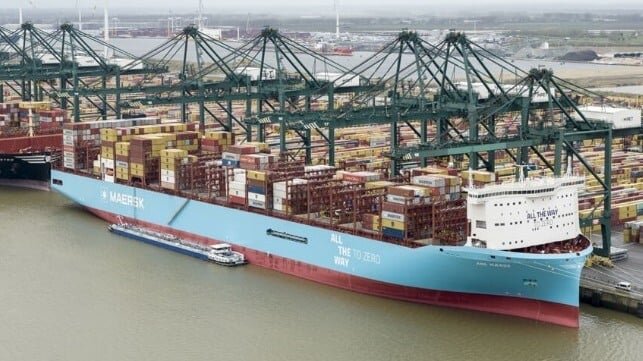The Emergence of Methanol and Ammonia-Powered Vessels in the Shipping Industry
The age of methanol and ammonia-powered vessels is quickly emerging, as highlighted in a new report from the Global Maritime Forum’s Getting to Zero Coalition. The report, based on industry interviews, indicates that both alternative fuels have made significant progress and are now considered viable shipping fuels.
Progress and Maturity
The Coalition has been monitoring the development of methanol and ammonia as marine fuels since 2020. According to their latest findings, both fuels are now deemed ready for adoption. While this signifies a significant increase in maturity since the initial report, the Coalition emphasizes the need for substantial support to transition the fuels from pilot stage to full maturity. The report underscores the importance of a concerted effort to achieve scalability by 2030, aligning with the industry’s decarbonization targets.
Focus on Methanol and Ammonia
This year’s report specifically delves into the potential of methanol and ammonia as shipping fuels. Despite being in the early stages of adoption, both fuels show promising long-term prospects. The analysis categorizes the progression into three stages: proof of concept, initial scale, and maturity.
Methanol Advancements
Methanol is rapidly transitioning from proof of concept to early scale, with over 60 methanol-capable vessels currently in operation and 300 more on order. Bunkering facilities are available at approximately 42 ports, making it a feasible option for ship operators. While methanol’s lower energy density poses operational trade-offs, retrofitting conventional vessels with new kits is becoming more accessible. The main challenge lies in the availability of green methanol, which remains limited and costly.
Ammonia Potential
Ammonia, although less mature than methanol, is approaching proof of concept as a marine fuel. Engine tests suggest that it can significantly reduce emissions, with some trials showcasing up to a 95% decrease in tank-to-wake emissions. While concerns exist regarding seafarers’ acceptance of working on ammonia-fueled ships, ongoing crew training initiatives aim to address these apprehensions.
Challenges and Recommendations
The report acknowledges the need to address key challenges, such as enhancing the supply chain for green methanol and implementing commercial ammonia bunkering at crucial ports. To accelerate the adoption of zero-emission fuels, the Getting to Zero Coalition calls for targeted policy incentives, funding support, harmonized fuel certification systems, and the aggregation of fuel demand to drive investments in bunkering infrastructure. Additionally, they advocate for CAPEX grants to facilitate the development of essential bunkering vessels.
Overall, the report underscores the importance of collaborative efforts from the International Maritime Organization, policymakers, and industry stakeholders to create favorable conditions for the widespread adoption of methanol and ammonia as sustainable shipping fuels.

